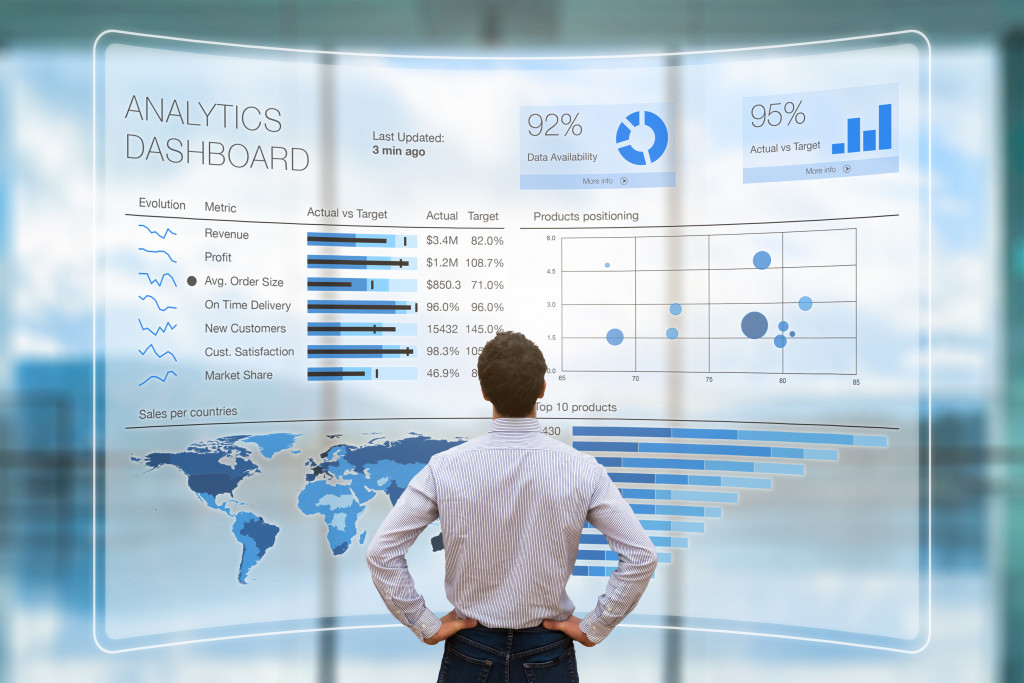Data is becoming increasingly crucial for businesses as they strive to become more efficient and effective. According to a study by IBM, data-driven decision-making can increase profits by up to 15%. Furthermore, businesses that can effectively use data are 38% more likely to be profitable than those that don’t. The benefits of data-driven decision-making are clear, and companies that don’t begin taking advantage of this valuable resource will soon find themselves at a disadvantage.
However, business data will come from all angles and give businesses headaches if they don’t have the proper systems and processes to manage and analyze it. Fortunately, data management is a standard business service with many tools and technologies available to help. Where should businesses invest in data management? Here are a few areas.
Cloud-Based Collection
Data is often online, especially in today’s digital world, and cloud-based technology is the best way to collect it. Tools like Salesforce, Marketo, and Google Analytics can quickly gather business data from websites, social media accounts, customer contact forms, and more — all in one place.
The cloud is an excellent place for businesses to invest in data collection because it provides several advantages:
- The cloud is scalable, meaning companies can add or remove resources as needed. This makes it an excellent option for businesses that are growing or expanding.
- The cloud is secure. Data is encrypted, and access is restricted to authorized users. This makes the cloud a safe place to store sensitive information.
- The cloud is cost-effective.
Businesses can save money on hardware and software costs by using the cloud.
These factors make the cloud an excellent place for businesses to invest in data collection. Companies can use the cloud to improve their efficiency and reduce costs.
Data Visualization Platforms
Once businesses have collected their data, they need to find a way to make sense of it. Data visualization platforms are the perfect solution for this task. They allow businesses to quickly and easily visualize their data in graphical formats such as charts and graphs.
Visualization platforms also help businesses gain insights from their data. For example, companies can use them to compare performance across different departments or analyze customer behavior over time. With these insights, businesses can make more informed decisions and better understand their customers’ needs.
Finally, visualization platforms are cost-effective because they don’t require expensive hardware or software investments. Businesses can access them via the cloud, so they don’t have to worry about maintenance costs or additional staff training.
Your marketing, sales, and customer service teams can all benefit from a data visualization platform. It’s an essential tool for businesses that want to make the most of their data.
Data Analysis Software

Once businesses have collected and visualized their data, they need to analyze it. Data analysis software is designed to help companies make sense of complex datasets and uncover patterns and trends in the information.
Data analysis software can be used for predictive analytics — predicting future outcomes based on past performance — and other analyses such as segmentation, clustering, regression, and optimization. This helps businesses better understand customer behavior and identify areas where they can improve their products or services.
You can also use data analysis software to create reports that provide insights into business performance over time. This is important for businesses that want to understand their overall performance and make informed decisions.
Data analysis software can be expensive, but it’s an essential tool for businesses that want to gain insights from their data. Investing in the right software can help companies to save time and money in the long run.
Data Security Solutions
Finally, businesses need to consider investing in data security solutions. Data breaches are becoming increasingly common, so companies must protect their information from malicious actors. Several tools and technologies are available to help with this task, including encryption, authentication systems, two-factor authentication, firewalls, antivirus software, and more.
Data privacy software solutions are also available, allowing companies to protect customer data from unauthorized access. This is an essential consideration for businesses that collect and store sensitive information.
These security solutions can be expensive upfront, but they’re necessary investments if companies want to protect their data. In addition, businesses can save money in the long run by avoiding costly data breaches.
Investing in these technologies is essential to any business’s data strategy. Companies should ensure that all their information is secure before collecting or analyzing it.
Final Thoughts
Having a comprehensive data strategy can be beneficial for businesses of all sizes. By investing in the right tools and technologies, companies can collect, visualize, analyze, and protect their data — all with minimal effort and expense. With careful planning and implementation, businesses can use their data to gain valuable insights and make more informed decisions.






